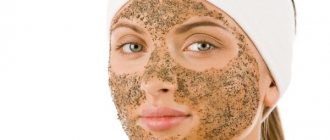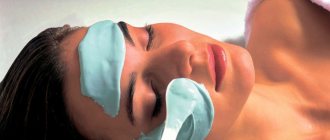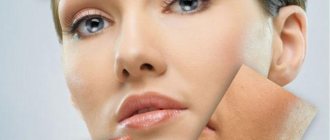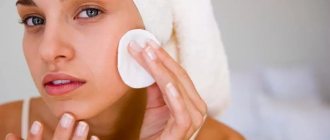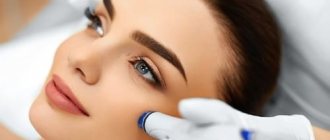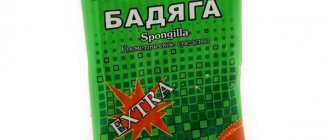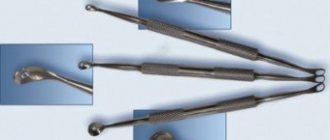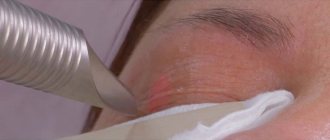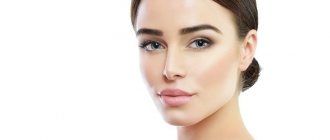In autumn, the only thing we want is for summer to return and continue to generously bestow us with kind and warm rays of sunshine. You are probably already sad about the summer, remembering how many interesting, new and pleasant things have happened over these three months. But with the onset of autumn, it’s time to take care of your skin, dried by the sun and sea water, and do a chemical peel. Wrinkles and age spots won’t stand a chance!
The word peeling translated from English (peeling) literally means exfoliation, exfoliation. It accurately reflects the essence of the cosmetic procedure - the removal of dead (old) skin cells. According to the method of exposure to the skin, chemical peels are distinguished, mechanical, laser, ultrasound, and according to depth - superficial, medium and deep.
Medium TCA peel: procedure
Let's look at the procedure using the example of peeling with trichloroacetic acid.
Medium TCA peeling is carried out after preliminary preparation. It is preceded by hygienic cleansing of the skin 1.5-2 weeks before the procedure. After cleaning, the doctor selects a cosmetic product with glycolic acid (low concentration) for the patient for daily care. The purpose of preparation is to carefully soften the stratum corneum and remove dead epidermal cells. Immediately before peeling, the doctor cleanses the skin with special products and applies protective lotion to delicate areas (skin around the eyes, lips). After this, several layers of trichloroacetic acid are applied to the face. The application of acids continues until a thin film resembling frost appears on the skin. This phenomenon is called frost, or frosting.
After frosting appears, peeling stops. The acid is removed using a special neutralizing solution. A mask is applied to the skin, which has a cooling, neutralizing, moisturizing and nourishing effect. At the final stage, the skin is treated with a special cream.
Other types of medium peeling fit into the scheme described above, but each procedure has its own characteristics. You can get detailed answers to your questions during a consultation with a cosmetologist at the Moscow SOHO CLINIC.
What effect can you expect from peeling?
Thanks to chemical peeling, the skin texture is evened out, which is important for oily and porous skin, and in the presence of acne marks; pigment spots are lightened; the number of fine wrinkles, including around the eyes, decreases; turgor improves, and the skin takes on a glowing and well-groomed appearance. Depending on the problem, the appropriate peeling is selected.
Expected effects from chemical peeling:
Improved appearance, turgor and elasticity. Correction of hyperpigmentation. Smoothing the skin profile: reducing the size of skin pores, leveling out fine skin wrinkles. Activation of metabolic processes in the skin and, as a result, an improvement in complexion, the skin becomes denser and more elastic. The stimulating effect on the skin is realized indirectly through the inflammatory reaction in response to strictly dosed chemical damage. Whitening effect. Is it possible to independently determine whether chemical peeling or some other procedures are needed to improve the condition of the skin?
Indications and contraindications for the peeling procedure should be judged by a qualified specialist; what is an indication for the procedure for one type of peeling or a particular patient may be undesirable for another patient.
Indications for the use of peelings can be divided into several groups.
First indication: aging skin. The rejuvenating effect is achieved by stimulating cells. As a result, tissue tone improves and the severity of wrinkles decreases.
Second indication: skin with hyperpigmentation. The peeling procedure normalizes melanin levels and pigmentation disappears.
Third indication: acne-prone skin. Glycolic acid is a natural antiseptic. Peeling normalizes the functioning of the sebaceous glands and is a good means of preventing scars that appear after acne.
Fourth indication: cosmetologists work with glycolic acid when solving stretch marks problems. Stimulation of cells leads to improved skin tone, stretch marks become less noticeable, and the skin becomes more toned and elastic.
Fifth indication: preparing patients for cosmetic procedures. After peeling, the skin's potential increases, which is necessary for recovery after the procedure.
What is the difference between superficial peeling and medium peeling?
Superficial chemical peels (AHA, or fruit acids) are a pleasant, relaxing procedure: a thin layer of acid is applied to a cleansed face, then it is neutralized and washed off. Such peelings do not require disruption of work rhythm and restrictions in communication. A day or two after the procedure, the skin begins to peel off slightly, but if the cosmetologist’s recommendations are followed correctly, those around you will not notice this. But they will notice that your skin is fresher. Superficial peeling is a gentle procedure. Therefore, if your goal is not limited to getting yourself in order for an important event in a few days, but you need a lasting result, one procedure will not be enough. The optimal course is 4-6 procedures.
Medium peels (for example, TCA - trichloroacetic acid) are recognized by both patients and cosmetologists as the most effective. And, although the skin feels them more acutely than superficial ones, a burning sensation is felt, redness appears, there is something to endure for the sake of it. Thanks to medium peeling, the skin gains a second youth - it becomes fresh, tightened, its previous structure is restored, pronounced age-related pigmentation disappears, wrinkles of even medium depth are smoothed out, and some scars are evened out. Already 7-10 days after the procedure, you can wear makeup and calmly appear in public without fear of being “exposed.” And after 2-3 weeks, when traces of redness finally disappear, your skin will gain freshness, become young and beautiful.
Is it possible to perform one peeling procedure or is a course required?
Superficial peeling is performed as a one-time procedure or in a course of 5-10 procedures with an interval of 3 to 6-10 days. Medium peeling program for TCA15% 3-5 procedures with an interval of 1-3 weeks, for TCA20-25% 2-5 procedures with an interval of 1 month.
A dermatocosmetologist at our Beauty Center will help you create a program of peeling procedures taking into account the individual characteristics of your skin.
After medium peeling
You should be prepared for discomfort after a mid-peel. The main cause of discomfort will not be pain, but a feeling of skin tightness and severe peeling. You can fight the symptoms with thermal water or special means, but they will not always give the desired result. In a word, you will have to be patient, limit the activity of facial muscles and wait until the peeling goes away.
The duration and degree of discomfort depend on the depth of exposure, but, as a rule, the discomfort goes away within 5-7 days. During this time, several rules should be followed: you should not use scrubs, aggressive cleansers and alcohol-based tonics. For care, you need to choose the most gentle products with a neutral pH. You should not use oily creams - they delay the process of cleansing the skin of dead elements.
You can use decorative cosmetics from the second day after the procedure, but you cannot sunbathe in a solarium for 2-4 weeks. Also, you should not visit the sauna or swimming pool. You will receive the most detailed information with individual recommendations from the cosmetologist who will perform this procedure.
Medium chemical peel
For those who want to improve the appearance of their facial skin and simply reduce the number of wrinkles, a medium peel is best. Medium chemical peeling effectively smoothes the skin and gives it a youthful appearance. In addition, this procedure eliminates age spots and wrinkles. This type of peeling has no effect on acne scars and expression lines. For medium peeling, various chemical agents are used. Trichloroacetic acid is most often used for this purpose, as well as Jessner's solution, glycolic and salicylic acids and others.
- This type of peeling has a medium effect on the skin and can correct cosmetic defects such as fine wrinkles, scars, and spots. It is stronger than superficial, but less traumatic than deep.
Indications
Medium chemical peeling is indicated in such cases as:
- Violation of skin microrelief, minor and shallow wrinkles on the face;
- Scars (hypertrophic and keloid).
- Seborrhea.
- Actinic hyperkeratosis.
- Pigment spots, presence of freckles.
- Presence of superficial keratomas.
- Presence of post-acne.
- Aging, fading, sagging skin.
Contraindications
- Hypersensitivity to peeling components
- Acute inflammatory rashes (herpes, pyoderma, etc.)
- Infectious skin diseases (trichophytia, microsporia, etc.)
- Violation of the integrity of the skin
- Chronic dermatoses in the acute stage
- Excessive skin exposure
- Pregnancy and lactation
The procedure is carried out by a cosmetologist in a clinic, beauty salon, treatment room or other specialized institution. Medium chemical peeling.
Features of the procedure
Before the procedure, you need to undergo an examination that will identify problems and the presence of contraindications.
Peeling features:
- You cannot use nourishing creams or scrubs 48 hours before peeling.
- At the initial stage, the cosmetologist cleanses the skin.
- Initially, the skin becomes red, the protein structures of the cells thicken and fold.
- Swelling and foci of inflammation occur.
- Then exfoliation begins, which can last several weeks.
- After this, active regeneration occurs and a new layer of skin appears.
Recovery period after the procedure: medium chemical peeling
After performing a medium chemical peel, you must adhere to the following rules:
- Use of anti-inflammatory drugs containing antioxidants.
- For the first five days, it is better not to use creams, but make do with foams and care gels.
- Do not use even light cosmetics for at least a week.
- Facial scrubs are contraindicated until complete recovery.
- It is necessary to limit touching your face as much as possible to avoid infection.
- Visiting the solarium is strictly prohibited; use sunscreen before going outside!
Medium chemical peel
MEDIUM PEELING: GENERAL CHARACTERISTICS, TYPES, CAPABILITIES
If superficial peeling is aimed at stimulating the renewal of epidermal cells and, in particular, intensifying the exfoliation of keratinized dead cells, then medium peeling is a deeper effect.
Aimed at chemical or mechanical removal of the outer 4-5 layers of skin down to the basement membrane, this procedure is designed to activate metabolic and regenerative processes. This type of exposure is quite traumatic, and therefore cannot be used without a doctor’s prescription or is carried out frequently. After the rehabilitation period after peeling, the skin acquires a fresh and healthy appearance, radiance and a pleasant shade, and its tactile sensations become similar to the skin of a child. Small wrinkles and photoaging effects are eliminated, tone is evened out, pores are cleansed. By enhancing metabolic processes, the development of inflammation is prevented, the activity of the sebaceous glands of the skin is normalized, which significantly reduces the risk of unaesthetic oily shine. There are several types of medium peeling:
- • mechanical, • chemical, • hardware or physical.
Mechanical types include sandblasting dermabrasion and gas-liquid exposure, in which a large number of tiny particles of active substances are applied under pressure to the facial skin, mechanically eliminating the outer layers of the epidermis. With hardware techniques, laser treatment is used, with the help of which the cells are dehydrated and removed. Medium chemical peeling involves the use of acetic, glycolic, salicylic or various types of fruit acids; phenol-based cosmetics are less commonly used. By interacting with protein structures, these aggressive substances destroy cell walls, thereby causing the death of the surface layers of the epidermis. The use of acids is one of the most effective and popular peeling methods, allowing you to achieve remarkable and truly lasting results.
DEEP FACIAL PEELINGS
Deep peels are equivalent to surgical interventions, so they are performed strictly in an operating room and if there are appropriate indications.
When carrying out deep peeling, destruction of the epidermis and part of the dermis (up to the papillary layer) occurs. Subsequently, the reconstruction of the epidermis is carried out from the epithelium of the hair follicles, sebaceous and sweat glands. The facial area is characterized by a large number of the above-mentioned skin appendages, as well as intense blood circulation and good metabolism - which is why aggressive deep peeling is performed only in this anatomical area. In other areas of the body, the procedure will inevitably provoke the formation of scar defects.
Deep peeling is carried out using trichloroacetic acid (TCA) at a concentration of 40-50% or phenol.
While superficial and medium peels have virtually no effect on the dermis, deep facial peels work specifically with this layer of skin. The active substances destroy old collagen and elastin fibers that are unable to fully perform their functions. At the same time, they trigger the natural process of forming a new collagen-elastin framework. Deep peels provide the most pronounced rejuvenating effect, due to the fact that they act on the entire depth of the middle layer of the skin, thus reliably eliminating age-related changes in the skin.
STRUCTURE OF HUMAN SKIN
Understanding the essence of the medium peeling procedure is impossible without at least general information about the structure of the skin.
Human skin is a natural multi-layered barrier against pathogens, atmospheric influences and other negative external factors. Its structure is formed by the following layers:
- • the outer epidermis, where the ducts of the skin glands exit, its cells are divided into types: horny, shiny, granular, spinous, basal; • dermis (or skin itself), formed by the papillary and reticular layer, in which receptors, hair follicles, elastin and collagen fibers, and secretory glands are located; • hypodermis, which is a subcutaneous fat pad penetrated by microcapillaries that deliver oxygen and trophic components to the dermis and layers of the epidermis.
The structure of the skin is individual; the type of skin (dry, combination, oily), its color, microrelief and elasticity depend on the characteristics of the cells.
Indications for the use of chemical facial peeling
1. Biological aging of the skin - the optimal age for the prevention of skin aging is 28-30 years; to correct signs of aging, glycolic acid concentrations of 50% -70% are used. These concentrations have a stimulating effect and activate collagen synthesis. The effect is directly proportional to the concentration and exposure time.
2. Photoaging – changes in the skin under the influence of UV rays. The concentration of glycolic acid is 50-70%. The most promising is the combination of AHAs with antioxidants and whitening agents.
3. Hyperpigmentation – it is recommended to use AHA up to 50%, as inflammation can cause increased pigmentation. Due to the risk of developing post-inflammatory pigmentation, combinations of glycolic acid with kojic and phytic acids are used. In post-peeling care, it is mandatory to use drugs that block melanogenesis (suppression of the synthesis of melanin pigment by skin cells), as well as protection from UV rays.
4. Acne - with acne and seborrhea, a thickening of the stratum corneum is observed, the skin acquires a characteristic earthy tint, becomes rough to the touch, and horny plugs soaked in sebum form at the mouths of the follicles. Post-acne phenomena appear quite early. The use of chemical peels for acne has a number of features: preparations containing only fruit acids (AFA) are used only for non-inflammatory forms of acne and seborrhea (increased oily skin, open and closed comedones). To work with papulopustular forms of acne, drugs with powerful anti-inflammatory and sebostatic effects are needed, including retinoids, ascorbic acid, and plant extracts. Such drugs can reduce hyperkeratosis and hyperemia in the area of inflammatory infiltrates, reduce the activity of the sebaceous glands, improve microcirculation, thereby activating reparative processes in the skin, which is the prevention of scar formation.
Chemical peeling with retinoids / yellow peeling - the peculiarity of this peeling is that when applied to the skin it does not cause primary damage to the epidermis. Retinoids have a powerful stimulating effect on the cellular structures of the epidermis and dermis through interaction with specific nuclear receptors. The absence of primary skin damage allows yellow peeling to be performed even on patients with thin skin.
Indications: biological aging of the skin (after 35 years), hyperpigmentation, photoaging, late acne and post-acne.
Chemical TCA peeling (trichloroacetic acid) . TCA is used both for superficial peeling (in concentrations less than 20%) and for medium peeling (concentrations from 20-40%). TCA is a keratolytic and causes protein coagulation. The degree of damage and healing time depend on the concentration of the acid, as well as the thickness of the stratum corneum. The higher the concentration, the deeper the damage and the longer it takes to regenerate. The main condition for successful TCA peeling is uniform and controlled penetration of the acid into the skin. Pre-peeling preparation is mandatory.
Indications for TCA peeling:
- Solving the problems of skin unevenness - post-acne, enlarged pores, but strictly without exacerbation of acne.
- Aging skin (35-45 years), especially effective for patients with phototype I-III, with thick, porous skin. The regenerative abilities of the skin must be taken into account. TCA peeling alone is not recommended for patients of phototypes IV – V due to the risk of post-inflammatory hyperpigmentation.
- Hyperkeratosis.
- Striae.
Prices
Pricing for medium peeling services varies. If we talk about the average cost, which includes the cost of various products and medicines, then it will range from 4,000 to 8,500 rubles - if acid is used. Jessner peeling has a different price, which starts from 3,000 rubles up to 9,000.
Peeling using retinol will cost 3500-6500 rubles. Peeling using salicyl or glycol will cost much less, in the range of 2000-4000 rubles.
The price differs depending on the active substance
It is important to understand that when pricing a medium peeling procedure, many factors are taken into account: the qualifications of the staff, the clinic, the type of skin of the patient, and so on. Components such as the acids used, their concentration and method of application are also taken into account. You can also include care products during the rehabilitation period, various creams and masks.
Many factors influence the final price
Peeling INNO-PEEL (INNOSEARCH, Spain)
There are a huge number of different peelings on the cosmetic products market, both in terms of the composition of active ingredients and the direction of impact. In our clinic we use INNO PEEL peelings from the Spanish laboratory INNOSEARCH, which have proven themselves over many years.
- Rejuvenating peeling Inno-Peel Antiaging.
- Restoring peeling Inno-Peel Skin Recovery.
- Whitening peeling Inno-Peel Whitening.
- Restoring peeling with lactocomplex and vitamin C Inno-Peel Lactobio C.
chemical facial peeling before and after photos
Benefits of Inno-Peel peels:
- direct revitalizing effect on skin cells;
- strictly selected formulation of each Inno-Peel peeling, ensuring a high degree of safety and effectiveness;
- optimal concentration of each component, guaranteeing good tolerability;
- solution for a wide range of aesthetic indications.
Individual consultation
Why do you need to prepare your skin for a medium peel?
An appropriate scheme for preparing the skin for peeling can increase the effectiveness of the procedure and shorten the recovery period in all cases, but the preparatory stage plays a special role when working with patients at risk, for example:
• with hypersensitive skin;
• with acne of the second stage;
• with rosacea.
Reduced effectiveness of the main procedure, a protracted rehabilitation period and, as a result, patient dissatisfaction are the consequences of improper pre-peeling preparation or its absence.
Follow us on Instagram!
To avoid this, at the stage of initial diagnosis of the patient, it is necessary to qualitatively assess the condition of the skin in order to determine which preparation regimen will be most effective for a particular patient.
Preparation for medium peels must begin no later than two weeks before the main procedure.
Preparation for medium peels must begin no later than two weeks before the main procedure.
The basic principle
Medium peeling is a method of getting rid of hardened tissues and cells. It is used to correct cases with severe skin defects. To develop a clearer understanding of the principles of medium peeling, it is worth studying the nuances of skin composition.
Medium peeling is aimed at removing hardened particles of the upper layer of skin
Our skin consists of many layers and has a complex structure.
- The epidermis is the topmost layer, which itself consists of five cellular layers (horny, basal). The main and most important part of the epidermis is pigment, which is responsible for various spots and tanning.
- The dermis consists of two layers - papillary and reticular. There are many different vessels and lymphs that circulate blood. Also located here are hair follicles, nerves and collagen and elastin fibers.
- The hypodermis is subcutaneous fatty tissue, which is responsible for regulating temperature and is a source of nutrition.
Skin has several layers
When performing a medium peel, only the basal layer is affected. The method is used both on the face and in the cervical region, arms and other areas where problems have been discovered. According to the processing method, all types of peelings without reference to depth are divided into the following types.
- Mechanical, during which exfoliation occurs through physical interaction with the use of various rubbing agents (brushes, scrubs, masks). A vacuum procedure is also used.
- Physical, which involves the use of special equipment.
- Chemical, where various chemicals are used.
Can affect the skin in different ways
The main point in the peeling procedure is physical impact to remove the stratum corneum, desquamation of cells, evaporation of water using a laser device and treatment with chemicals. If the skin is damaged in this way, such manipulations will lead to cell renewal at an increased rate, and the production of collagen and other important elements of the skin layers will also increase.
Interesting ! If we talk about how this affects the skin in terms of appearance, then the skin becomes visually tightened and smooth, and both color and structure are evened out.
Peeling requires physical contact with the skin
Mechanical peeling is quite simple and few questions arise with it, which cannot be said about other types.
Let's take a closer look at all types of peeling.
